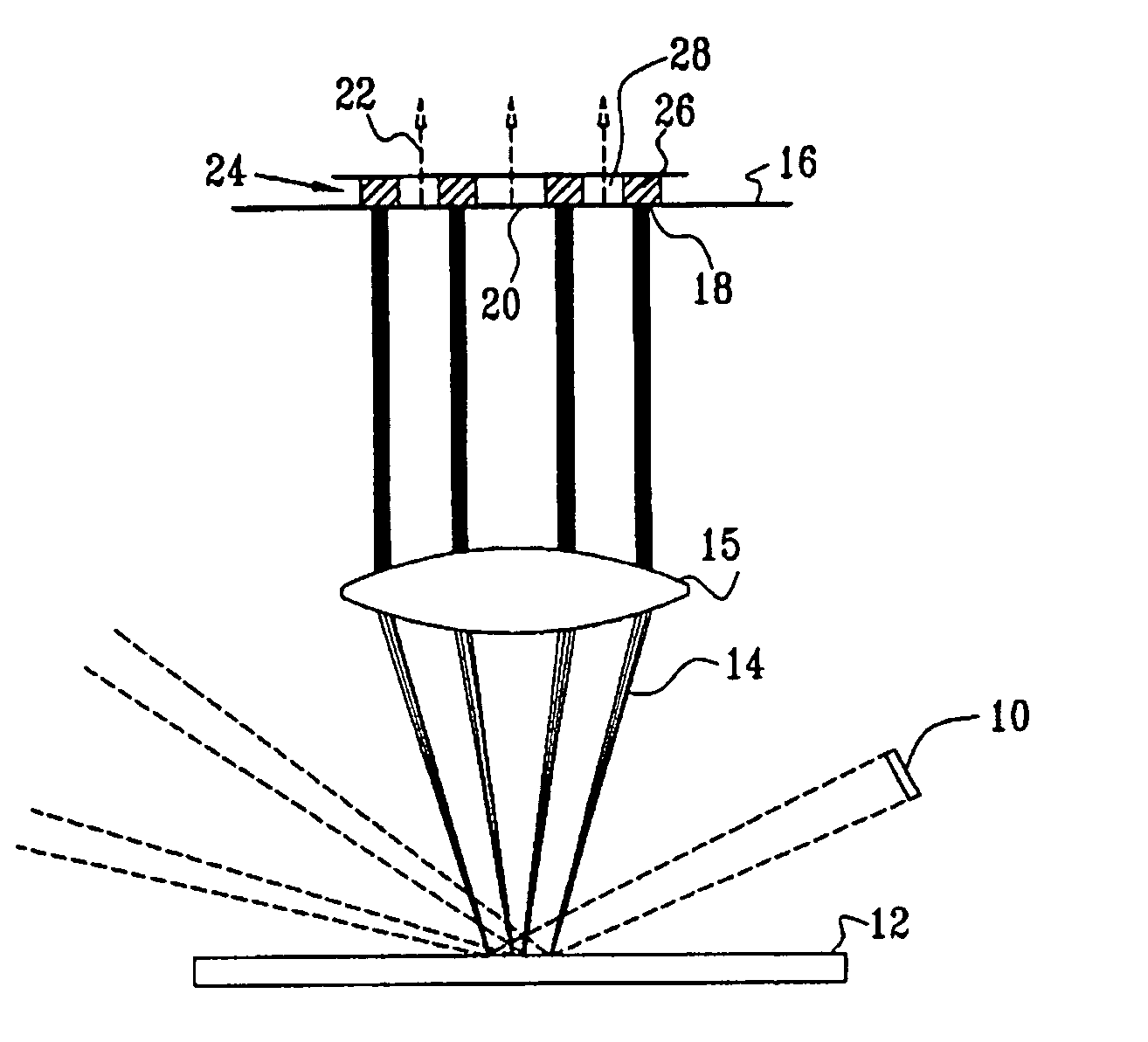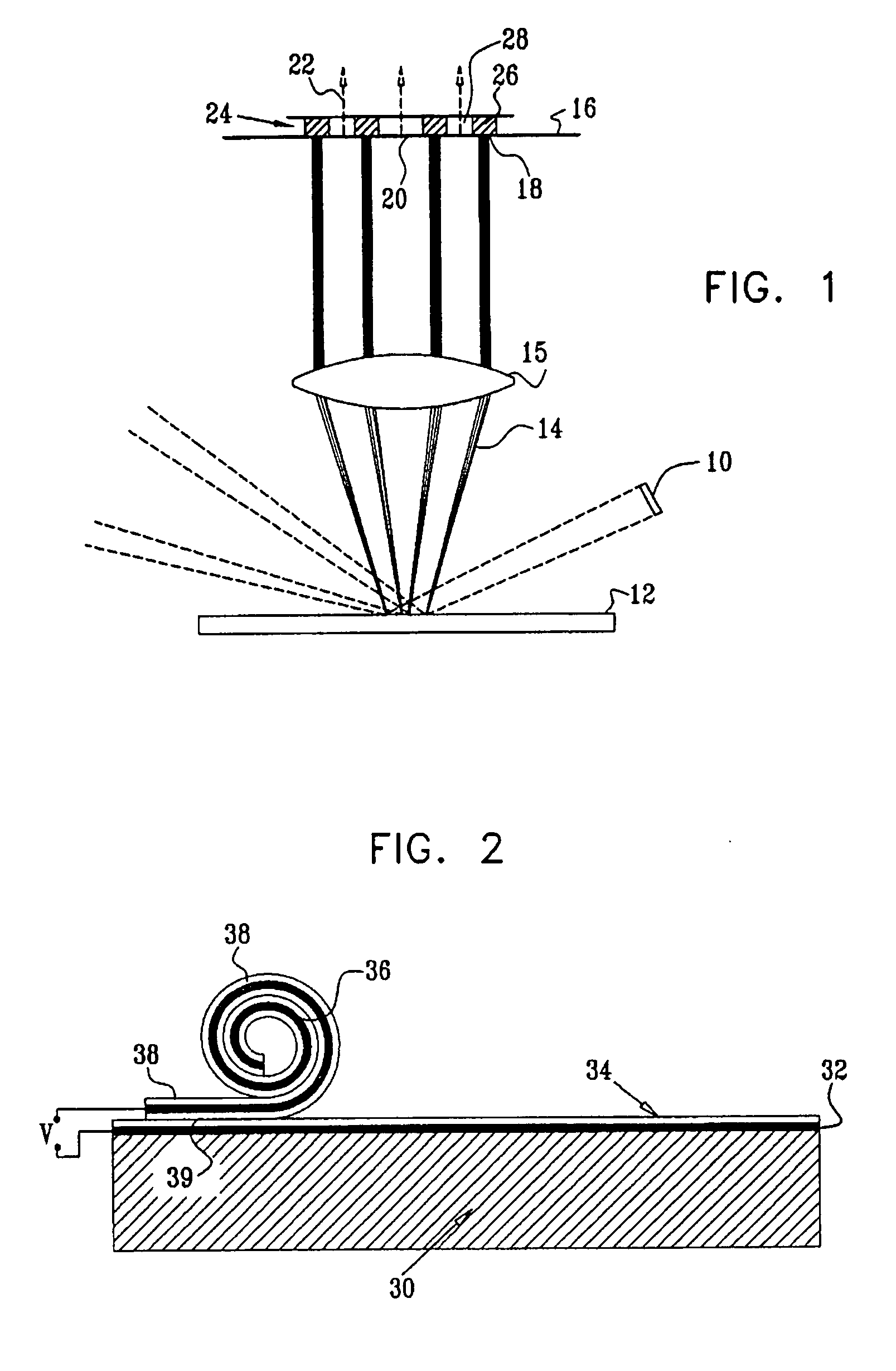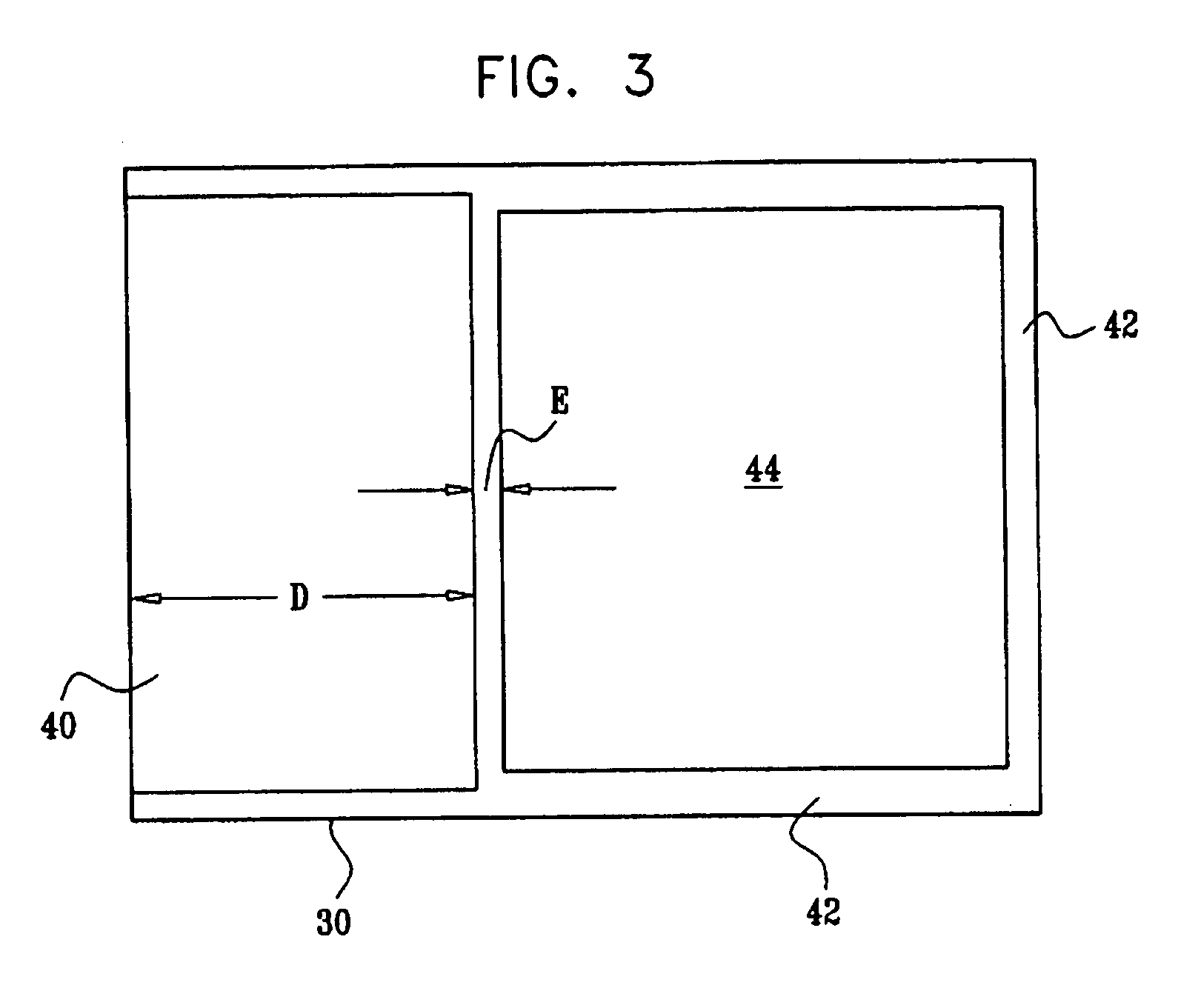Programmable spatial filter for wafer inspection
- Summary
- Abstract
- Description
- Claims
- Application Information
AI Technical Summary
Benefits of technology
Problems solved by technology
Method used
Image
Examples
Embodiment Construction
[0044] Reference is now made to FIG. 1, which illustrates schematically the dark field illumination system of a wafer inspection system utilizing a MEMS Fourier plane filter, according to a first preferred embodiment of the present invention. The light source 10, which can be non-parallel, is incident on the wafer 12 under inspection. The scattered light 14 from the wafer features is imaged by the objective lens 15. At the back focal plane 16 of this lens, which is the Fourier plane, there is generated a patterned array of spots 18 representing the repetitive features of the wafer being imaged by the scattered light. In the interstitial positions 20 between these spots, there may appear any light scattered from non-repetitive features on the wafer die, such as from a defect which it is desired to detect. A mask 24, preferably comprising a spatial light modulator (SLM) preferably made up of an array of MEMS shutters, is disposed at the Fourier plane 16. The individual MEMS elements o...
PUM
 Login to View More
Login to View More Abstract
Description
Claims
Application Information
 Login to View More
Login to View More - R&D
- Intellectual Property
- Life Sciences
- Materials
- Tech Scout
- Unparalleled Data Quality
- Higher Quality Content
- 60% Fewer Hallucinations
Browse by: Latest US Patents, China's latest patents, Technical Efficacy Thesaurus, Application Domain, Technology Topic, Popular Technical Reports.
© 2025 PatSnap. All rights reserved.Legal|Privacy policy|Modern Slavery Act Transparency Statement|Sitemap|About US| Contact US: help@patsnap.com



